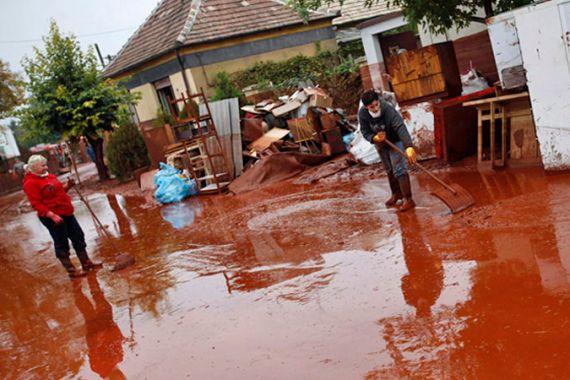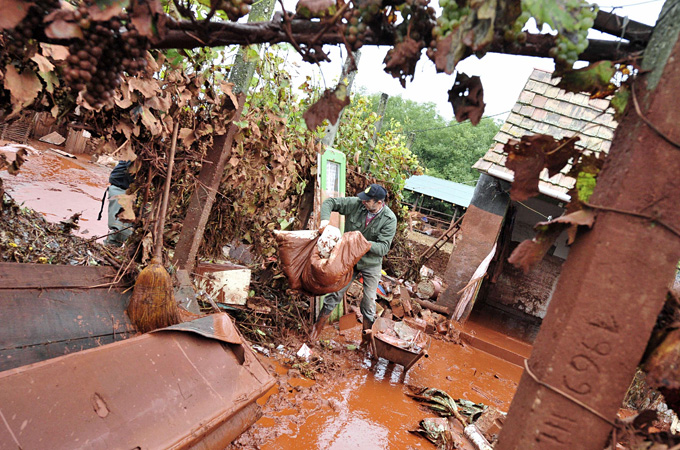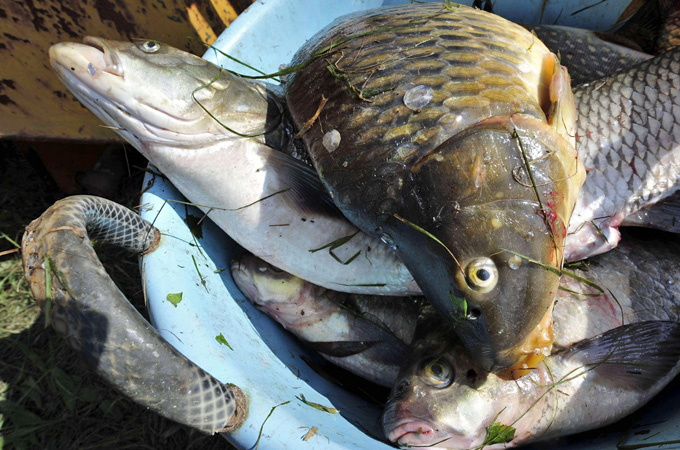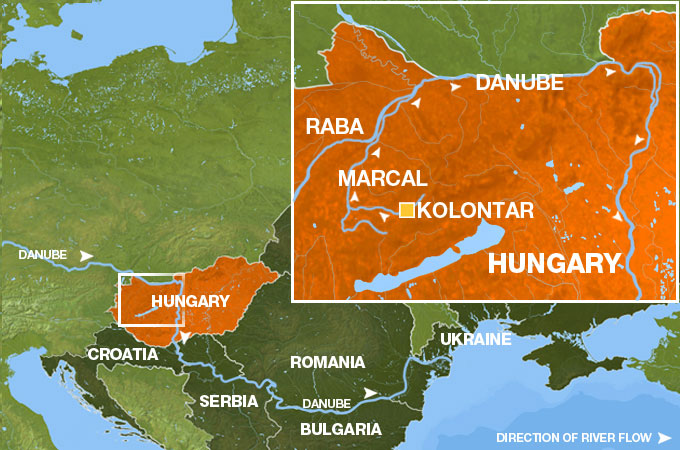Hungary firm defiant over red spill
Residents blame aluminium company for toxic spill that killed four people and devastated three villages.

 |
| Four people have been killed by the toxic waste that poured from an aluminium plant in Hungary on Monday [AFP] |
The company at the centre of Hungary’s toxic sludge leak said it has released $150,000 to local authorities to help deal with the disaster, while insisting it has done nothing wrong.
According to the mayor of one of the villages worst hit by the sludge, the sum from MAL Hungarian Aluminium Production and Trade Company would give payments of $504 to each family affected by the leak.
Keep reading
list of 4 itemsAfter the Hurricane
World’s coral reefs face global bleaching crisis
Why is Germany maintaining economic ties with China?
Tania Page, Al Jazeera’s reporter in Kolontar, said 34 homes in the village have been made completely uninhabitable and that authorities said it may take up to a year to get the affected area back to normal.
“They may have to remove a lot of the topsoil around here. If you think of that, $150,000 is literally just a drop in the ocean in terms of how much money is needed to fix the situation,” she said.
“The locals have hired themselves a top lawyer. They’re all pointing their fingers at the company [MAL]. The government also wants answers.”
In its statement, MAL also offered its condolences to the relatives of the four people who had lost their lives and said it would cover their funeral expenses.
More than 150 people were treated for burns and other injuries, and 11 remain in serious condition.
Rivers polluted
MAL has come under fierce criticism, with officials suggesting too much of the caustic red sludge was contained in the reservoir which burst at its aluminium plant on Monday. Authorities have ordered a criminal inquiry into the accident.
| In Depth | |||||||||||
|
The pollution reached the main branch of the Danube, one of Europe’s largest waterways, on Thursday, and officials said it had wiped out all life in the smaller Marcal tributary.
“I can confirm that we have seen sporadic losses of fish in the main branch of the Danube,” Tibor Dobson, the regional chief of Hungary’s disaster relief services, said.
“The fish have been sighted at the confluence of the Raba with the Danube,” where water samples had shown a pH value of 9.1. In order to save the river’s ecosystem, the pH level must be brought down below 8.
However, conflicting information was circulating about the dangers posed by the corrosive waste that poured from a reservoir at an aluminium plant west of Budapest when it burst on Monday.
The Hungarian Academy of Sciences maintained that while the material was a continued hazard, its heavy metal concentrations were not considered dangerous to the environment.
Zoltan Illes, the environment minister, said the henna-coloured sludge covering a 41sq km swathe of countryside does have “a high content of heavy metals”, some of which can cause cancer.
He warned of possible environmental hazards, particularly if it were to enter the groundwater system.
With rain giving way to dry, warmer weather over the past two days, the caustic mud is increasingly turning to airborne dust, which can cause respiratory problems, Illes said.
“If that would dry out then … wind can blow … that heavy metal contamination through the respiratory system,” he said.
He also said the long-term effects on the agricultural region were devastating. About 809 hectares of topsoil will have to be dug up and replaced because the highly alkaline sludge had killed off all the nutrients and organisms needed to keep the soil healthy, he said.
‘Waters drinkable’
Emil Janak, the director of the regional water authority, sought to allay fears about the impact the toxic spill would have on the Danube.
 |
| Dead fish has been collected at the bank of the polluted Marcal River [AFP] |
“Alkaline levels show that the pollution will probably not have an effect on the Danube’s ecosystem below Komarom,” he was quoted as saying by MTI news agency.
The city of Komarom is 20km downstream of the area where the red sludge is entering the Danube.
“The fish are edible and the waters are quite drinkable,” Janak said.
Countries downstream, including Croatia, Serbia and Romania, are ramping up water quality controls in towns along the river over fears of contaminated supplies.
Emergency crews in Hungary poured hundreds of tonnes of plaster and acetic acid into the rivers to neutralise the alkalinity on Thursday.
Gabor Figeczky, Hungarian branch director of the WWF environmental group, said that it seemed that the efforts would be enough to stop the pollution spreading beyond Hungary’s borders.
“Based on our current estimates, it [the pollution] will remain contained in Hungary, and we also trust that it will reach Budapest with acceptable pH values,” he said.
Viktor Orban, Hungary’s prime minister, has described the spill as a natural disaster unprecedented in Hungary.
“If this had happened at night then everyone here would have died,” he said as he visited on of worst affected villages. “This is so irresponsible that it is impossible to find words!”
Hungary’s national disasters unit said the red mud has a caustic effect on the skin.
“The sludge contains heavy metals, such as lead, and is slightly radioactive. Inhaling its dust can cause lung cancer,” it said.
 |
